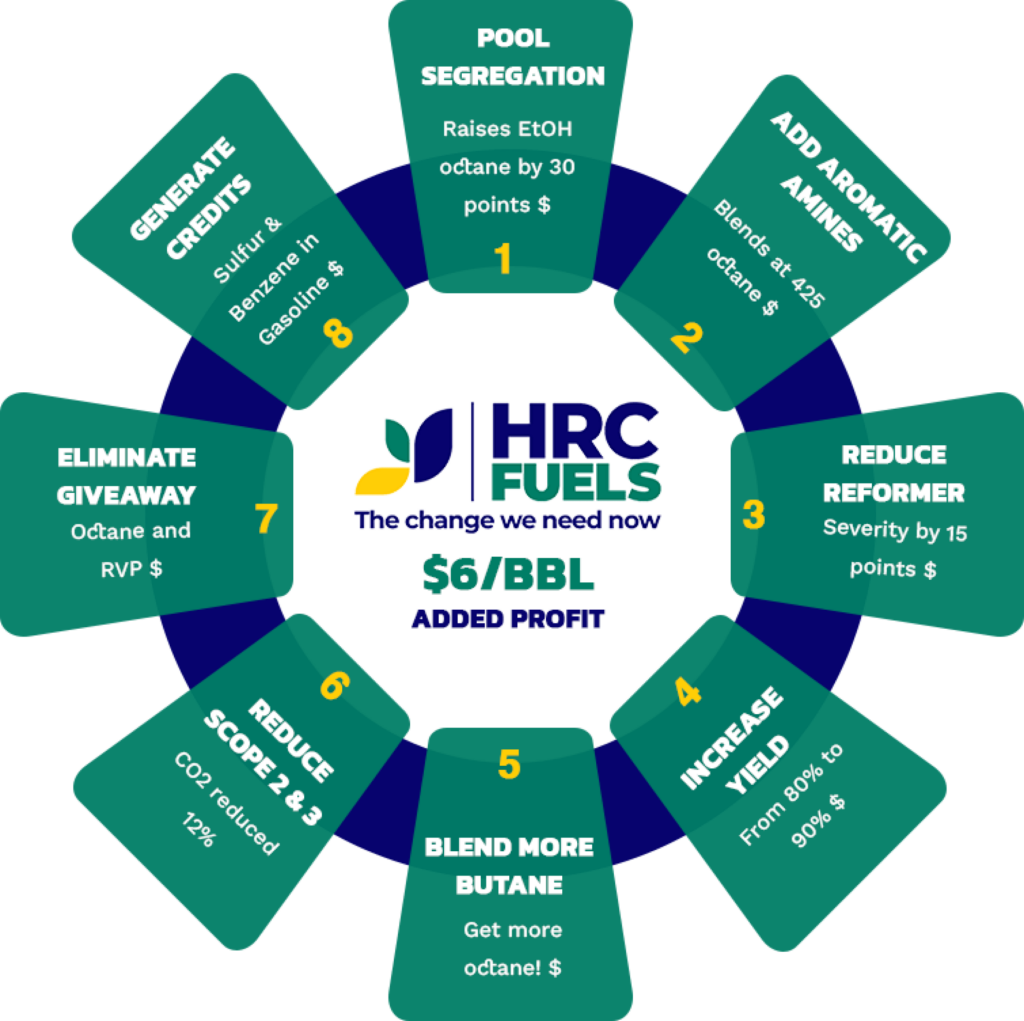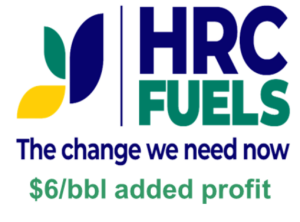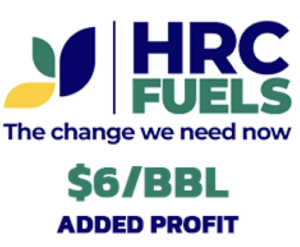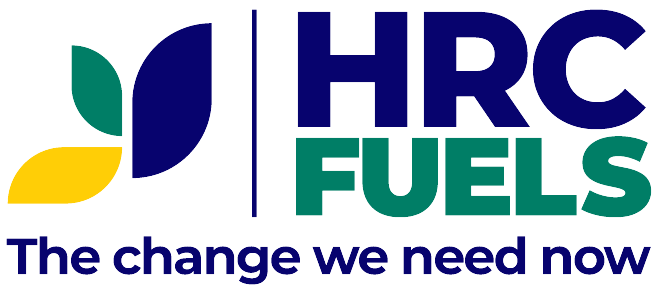ROADMAP TO INCREASE PROFITS
This diagram illustrates how to apply HRC Fuels technology to a typical refinery with little or no capital (pipes and pumps). The circumstances of every refinery are different – so not every refinery will proceed exactly in this fashion. We address some variants in the Q&A section below. HRC Fuels has done refinery-specific economic evaluations of this approach and typically have seen $6-7/bbl lower costs on a barrel of gasoline basis. Some refineries can capitalize on including renewable gasoline credits, which can significantly increase the benefits.

LOW/NO CAPITAL INVESTED



Pool Segregation and Add Aromatic Amines
We will almost always start with Steps 1 and 2 – Pool Segregation and Add Aromatic Amines. These two steps add significant octane to the gasoline pool at lower cost than conventional aromatic octane.




Reduce Reformer Severity (or Rate), Increase Yield and Blend more Butane
The higher liquid yield increases gasoline volume. Lower reformer yield of high RVP byproducts allows more butane to be blended. These steps can typically be done with minimal capital (pipes and pumps) and lead to Step 6.


Reduce refinery Scope 2 and 3 CO2 emissions
Step 6 highlights the reduced CO2 environmental benefits of the technology. Scope 3 CO2 emissions are the tailpipe emissions that come from using gasoline. HRC Gasoline has about 12 % lower Scope 3 CO2 tailpipe emissions on a per mile drive basis than typical US gasolines. This is primarily because it is hydrogen-rich: there are few olefins and aromatics. But the paraffins also have a higher energy density that olefins and aromatics, which contributes to lower Scope 3 emissions. Scope 2 CO2 emissions are produced by the refinery as patufacruring process. Catalytic Reforming is an endothermic process – the reactions consume energy. Cutting back or eliminating Catalytic Reforming can significantly reduce Scope 2 refinery emissions. For any refinery looking ahead to decarbonize their operations, this is a cost saving, simplifying change.
We present this step as the only one that is not a money-maker. That is because the savings are hard to quantify in our simple analysis. Reformer costs are significant, but so is the benefit of the by-product hydrogen. This balances differently for different refiners. However, some refiners will market their gasolines as the most environmentally friendly drop-in gasoline available. A lot of drivers who cannot afford EVs or other ZEVs will want to do what they can to minimize CO2 from their vehicles. You can supply that gasoline, and save money making it!



Eliminate Giveaway, Generate Credits for Sulfur and Benzene
Is a consequence of having the aromatic amines on hand in the refinery. Blending can be adjusted to be at the octane target, because the high octane aromatic amine is available to make the final adjustment.
Occurs for refiners who currently pay for credits. Paraffinic HRC gasoline contains virtually no benzene. The reformer reduction will make less benzene for any non-HRC Gasoline. Also, the lower cost octane from HRC gasoline allows full treating of heavy cat gasoline to eliminate all sulfur and olefins. This is economic and further swells the HRC gasoline pool.
We have run economics on several cases of refinery configurations, and find that these changes reduce the cost of making gasoline by $5-7/barrel of gasoline. You can see why. Each step adds concrete value to the bottom line (except Step 6 – reduced emissions – which you can monetize other ways).

Summary
We have run economics on several cases of refinery configurations, and find that these changes reduce the cost of making gasoline by $5-7/barrel of gasoline. You can see why. Each step adds concrete value to the bottom line (except Step 6 – reduced emissions – which you can monetize other ways).

Frequently Asked Questions
I need the hydrogen from my reformer. How do I make money?
In the short term, you can keep running your reformer where it is – or even raise severity. You can sell the high octane reformate, which is typically priced higher than Premium gasoline, and purchase locally-available low octane, low cost naphtha (or renewable naphtha) to blend. The low-cost octane from HRC Fuels technology can create a similar upgrade in this scenario. Of course, you will not see the benefits of increased liquid yield, blending more butane or lower Scope 2 CO2 emissions until the reformer is reduced.
What is Pool Segregation?
HRC Fuels technology is most impactful when applied to highly paraffinic gasolines. Ethanol has an octane blend value of about 145 when blended with paraffinic gasoline, vs. about 110 with mixed paraffin/aromatic gasoline. We call this Ethanol Octane Synergy. Segregating the paraffinic blend stocks provides a huge octane boost. The octane boost is maintained as you move from 10 % to 15 % ethanol – but there is 50 % more ethanol!
Why do you add Aromatic Amines?
Aromatic Amines have an octane blend value of 450 numbers!! Added to the octane boost from Ethanol Octane Synergy, the cost of octane from HRC Fuels technology is lower than conventional aromatics-based octane. The combination or Ethanol Octane Synergy and Aromatic Amines allows the refiner to blend low octane, low cost naphtha (or renewable naphtha) and make more money by making more HRC gasoline.
Are there other benefits of HRC Fuels technology?
Of course!
- It can be used to upgrade renewable naphtha to make renewable gasoline – and qualify for RINs and LCFS Credits. HRC Fuels can write recipes for this with very high levels of renewables.
- Similarly, where low octane naphtha is available near shale oil derived crude fields, the upgrading required with HRC Fuels technology avoids reforming and can make specification gasoline economically.
- Paraffinic HRC Gasoline not only has lower CO2 tailpipe emissions, but also has lower NOx and toxics tailpipe emissions.
This is new technology. How do we minimize the risk of trying it?
Whether applying the technology to an existing refinery or to blending renewables, HRC uses a step-wise process to allow customers see and understand it’s impact and effectiveness:
- Introduction to the opportunities – Share info on the technology and the customer’s facilities or refineries. Define where your operating concerns can be addressed with HRC technology – where you have the best chance to make money. This might take a couple of meetings and some follow-up phone calls.
- HRC creates recipes and preliminary economics with information provided by the customer. Recipes use volumes and properties of the customer’s gasoline blend stocks, and the volumes of the major gasoline blends.
- The customer does lab blends using their blend stocks to demonstrate that the recipes blend as predicted, and that all gasoline specs are met.
- The customer runs their LP and defines how to best make money from the technology.
- GATE 1: The customer (and HRC Fuels, if desired) present to customer Leadership the Business case for the initial application. Proceed if approved.
- The customer does a commercial scale demonstration blend, with follow-up analysis.
- GATE 2: The customer (and HRC Fuels, if desired) review a revised Business case with Leadership for initial production. Proceed if approved.
- The customer negotiates aromatic amine supply with a vendor and a licensing arrangement with HRC Fuels.
- GATE 3: Commercial scale production approved and begins.
- Repeat steps as needed with the next opportunity.
Our protocol allows the customer to stop or pause at any point along the way. HRC Fuels is not interested in billable hours consulting. Sometime around GATE 1 or 2. we arrange a very low monthly retainer fee for consulting to cover our development effort. Once you start commercial production, the Licensing fee will provide all HRC Fuels income. Early adopters get a reduced Licensing fee.
